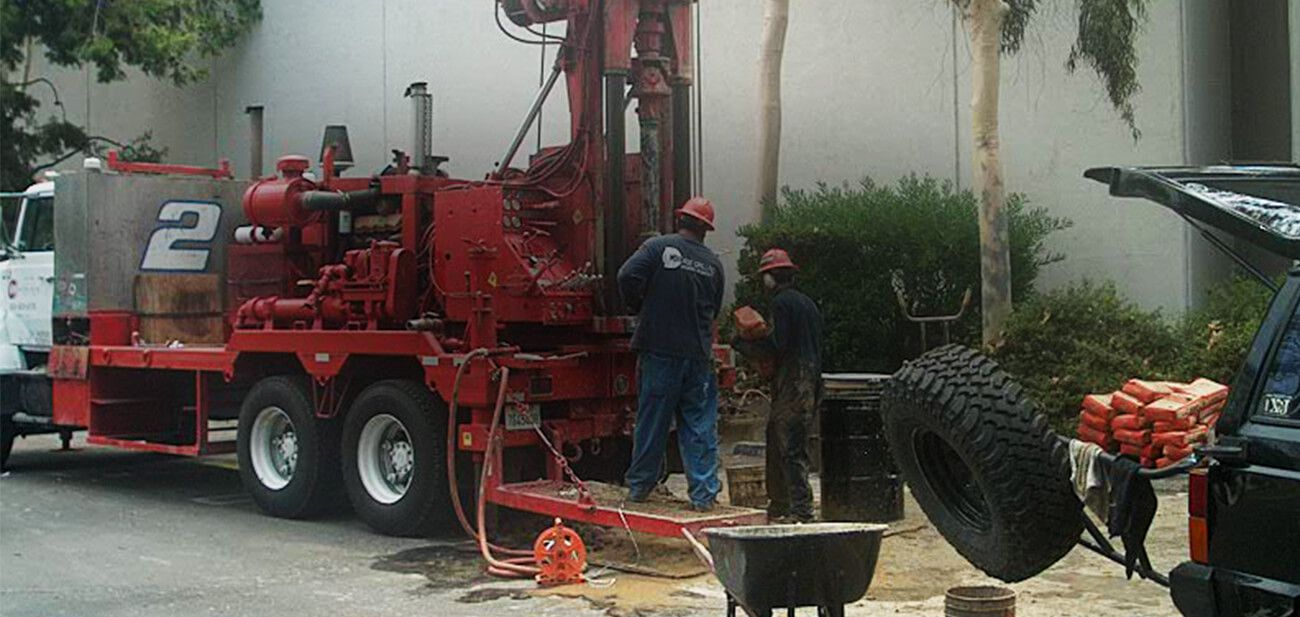The Impact of Geotheta on Improving Soil Stability and Architectural Honesty
The Impact of Geotheta on Improving Soil Stability and Architectural Honesty
Blog Article
Browsing Geotechnical Providers: The Relevance of Geotechnical News, Dirt Compaction Screening, and Sidewalk Layout in Ensuring Structural Stability
Geotechnical services, including the manufacturing of geotechnical reports, carrying out dirt compaction testing, and precise pavement design, serve as the foundation of making certain structural stability. geotheta. These crucial components not only lay the groundwork for successful job implementation yet also minimize possible dangers that might compromise the stability and durability of a building and construction project.
Relevance of Geotechnical Reports
Geotechnical records play an important duty in giving detailed insights into the soil and rock problems of a website, important for guaranteeing the structural stability of building jobs. These reports are an essential part of the preliminary website examination procedure, using useful information that influences the design, construction methods, and overall usefulness of a task. By assessing dirt structure, security, and prospective risks such as landslides or sinkholes, geotechnical reports make it possible for designers to make educated decisions regarding structure style and building techniques.
Furthermore, geotechnical records help in danger assessment and reduction methods, assisting job stakeholders understand the possible difficulties that may emerge throughout construction. Via detailed exam and analysis of geotechnical data, designers can establish solutions to resolve site-specific problems, guaranteeing the lasting security and security of the framework. Eventually, the comprehensive nature of geotechnical records acts as a vital foundation for effective job preparation and execution, reducing risks and improving overall task end results.

Duty of Soil Compaction Testing
How vital is the analysis of dirt compaction with screening for making certain the stability and longevity of construction projects? Soil compaction testing plays a vital role in the building sector by making certain that the dirt under a framework is effectively compressed to stop and support the intended lots negotiation (geotheta). Effectively compressed soil offers a stable foundation for structures, roads, and other structures, decreasing the danger of structural failing and expensive repair services in the future
Soil compaction testing involves gauging the thickness of the soil and comparing it to the maximum density possible for that specific soil type. This helps designers establish if the soil has been compressed sufficiently to support the scheduled framework. By performing soil compaction tests throughout building, engineers can recognize any type of areas that call for extra compaction and take corrective actions before proceeding with further building and construction.
Relevance of Pavement Layout
Evaluating soil compaction through testing not just makes sure the stability and long life of building and construction jobs however likewise lays a critical structure for effective pavement layout. Appropriate pavement design thinks about aspects such as website traffic load, environmental problems, dirt attributes, and product properties to develop a lasting and robust surface area. By including information from soil compaction examinations, designers can figure out the proper thickness, products, and layering for the pavement to endure anticipated stresses and keep architectural honesty over time.
Making Sure Structural Stability
These records supply crucial information on soil structure, stability, and prospective dangers, assisting in educated decision-making throughout the layout and building phases. Furthermore, performing comprehensive soil compaction testing is critical to make certain that the dirt beneath foundations or sidewalks is appropriately compressed to support the designated loads and avoid settlement issues.
Additionally, executing robust pavement style practices is essential for guaranteeing the architectural honesty of roadways, car park, and other smooth surfaces. Proper pavement layout takes into consideration elements such as web traffic volume, ecological problems, and soil qualities to develop risk-free and resilient transportation facilities. By adhering to these techniques and using geotechnical services effectively, building and construction tasks can improve their structural honesty, decrease dangers of failing, and guarantee the long-term efficiency of the developed environment.
Guarding Against Risks
In light of the critical value positioned on guaranteeing architectural honesty through precise interest to material option and soil screening, safeguarding against risks becomes vital in preserving the security and long life of building and construction tasks. Threats in building and construction projects can stem from various sources, consisting of all-natural calamities, dirt instability, or layout flaws.
Moreover, developing contingency plans and executing robust monitoring systems can help mitigate unexpected risks that may occur during construction. Regular inspections and quality control measures should be executed to make certain that products are made use of based on specifications and that building and construction techniques abide by industry criteria. By proactively determining and attending to potential risks, building and construction tasks can enhance their resilience and decrease the likelihood of architectural failures, ultimately making certain the security and durability of the built setting.
Final Thought

Dirt compaction screening plays a vital role in the construction market by guaranteeing that the dirt underneath a framework is effectively compressed to prevent geotheta.com and support the designated tons settlement.Soil compaction testing involves measuring the density of the soil and comparing it to the maximum thickness achievable for that certain soil type (geotheta). By carrying out soil compaction tests throughout building and construction, designers can determine any areas that call for added compaction and take restorative steps before continuing with additional building
Additionally, performing comprehensive dirt compaction screening is vital to make certain that the dirt below sidewalks or foundations is properly compressed to support the intended lots and stop settlement issues.
In conclusion, geotechnical records, dirt compaction screening, and pavement layout play vital functions in ensuring the architectural stability of building and construction jobs.
Report this page